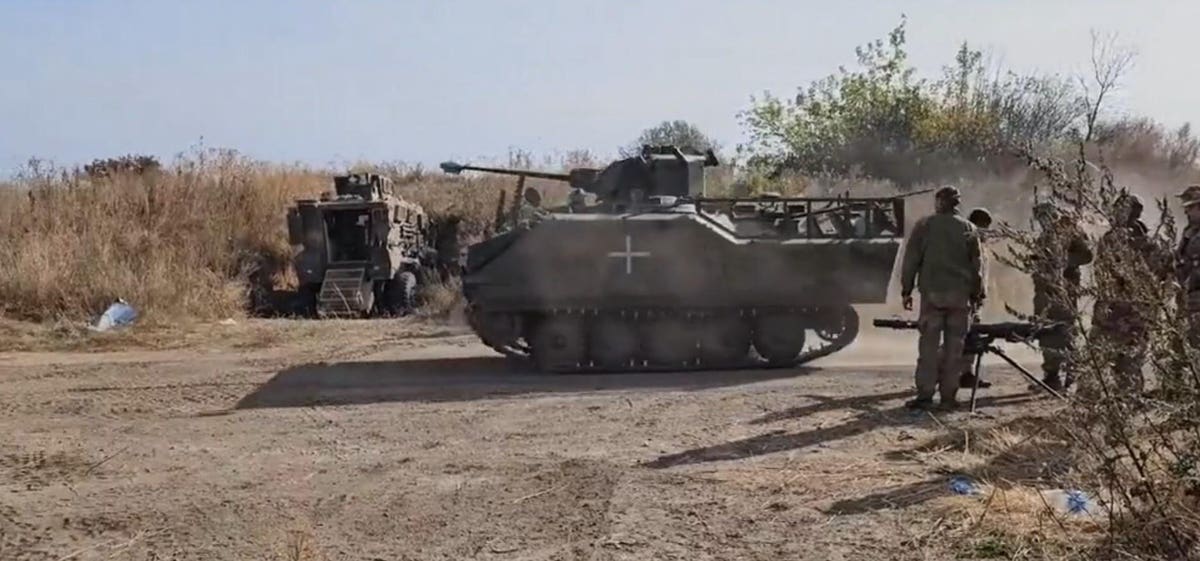Someone gave Ukraine infantry fighting vehicles based on the M-113 armored personnel carrier. These so-called “Armored Infantry Fighting Vehicles” have appeared in videos from the front line at least twice since August.
So far, no country has taken credit for the vehicles. But all eyes are on The Netherlands and Belgium.
The AIFV, a product of FMC in the United States, is an historical curiosity. A failed alternative to the American M-2 Bradley that found success in Europe, and then on the re-export market, before rolling into battle against the Russian army in Ukraine.
The M-2 has matured into one of the world’s better infantry fighting vehicles. But the 27-ton, 10-person M-2 with its day-night optics, powerful Bushmaster 25-millimeter autocannon and twin launcher for TOW anti-tank missiles is expensive: around $4 million per copy.
Anticipating that the U.S. Army might balk at the high cost of a vehicle with the capabilities of the M-2, in the late 1960s and early ‘70s FMC developed a lighter, cheaper IFV that borrowed the hull and chassis of an M-113 armored personnel carrier and added a one-person turret with an Oerlikon 25-millimeter autocannon.
It cost a tenth what an M-2 cost. And for good reason. It was thinly protected compared to the Bradley—even after the addition of bolt-on armor.
The Americans balked. Low cost mattered less to them than capability did. But FMC eventually found buyers for the AIFV: the Dutch and Belgians.
For a generation, the AIFV was the main IFV in the Dutch and Belgian armies. Deploying alongside German-designed Leopard tanks, the 14-ton, 10-person IFV trained for war with the Soviets, added heft to peacekeeping forces and even fought in Afghanistan.
A new generation of wheeled IFVs replaced the 600 Dutch and 500 Belgian AIFVs in the 1990s and early 2000s. The surplus AIFVs became a hot commodity on the secondhand vehicle market. Bahrain, Chile, Egypt, Jordan and Lebanon—among other countries—acquired copies.
And in August, AIFVs—likely ex-Belgian examples—showed up in Ukraine. Where they came from, no one has said.
It’s possible The Netherlands tossed a few AIFVs into the consignment of around 200 turretless YPR-765s it pledged to Ukraine in the spring of 2022. If so, did the Dutch acquire former Belgian AIFVs just like they’ve been buying up old Leopard tanks from all over Europe for onward donation to Ukraine?
We don’t know. And it’s safe to assume the Ukrainians don’t care. More than tanks and fighter jets, Ukraine needs infantry fighting vehicles. Lots of them. It’ll take the IFVs it can get, from wherever it can get them.
Read the full article here





